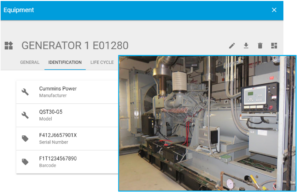Improve Your Maintenance Operations in K-12 Environment
Schools are facing several challenges in today’s environment. At the forefront are the Facilities Director’s that need to ensure budgets are followed, equipment is maintained and functioning as required, staffing resources are appropriate and students as well as teachers are safe. Using a facility operations tool such as a CMMS can help manage and improve your current maintenance environment. FacilityONE has found these 5 improvements to maintenance operations when a CMMS is being used with best practices.
MAXIMIZE PRODUCTIVITY
Keeping your team in the field where they are most effective is key. Using mobile devices ensures this occurs. Work Orders, both corrective and preventive can be dispatched, received, and completed quicker than using paper or a dispatch center.
 MANAGE CAPITAL BUDGETS
MANAGE CAPITAL BUDGETS
Tracking the cost of repair, the life expectancy and expected replacement costs allows facilities directors to report on the funds required for a capital budget. This way of tracking is much more accurate and provides for better managerial decisions.
OPTIMIZE STAFFING
By understanding the work required by location or discipline, facilities directors can right size their staffing needs. These analytics can also provide valuable information for when hiring additional technicians is necessary and it also identifies shortages of critical skills sets.
MAXIMIZE SAFETY
The safety of students, teachers, and administrators is always a focus. Using the blueprint functionality in your CMMS to track and communicate emergency plans and the location of other security needs such as panic buttons, the location of security cameras, bus routes, and evacuation routes and communicate to emergency responders in advance of an emerging event.
MITIGATE RISK
Using the safety features outlined above, facilities directors will mitigate the risk to personnel. However, the use of a CMMS also mitigates the risk of failing equipment, overdue or incomplete work orders, and unnecessary spending.
